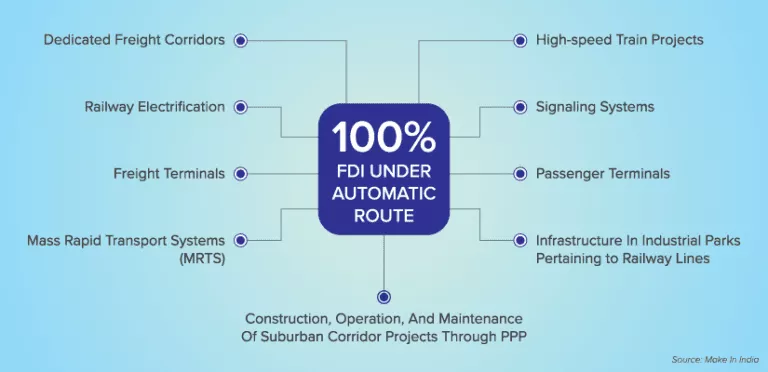India’s railway sector is a phenomenon, to say the least. Powered by a nation-wide network which supports a population of over a billion-and-a-half people at pocket-friendly prices, the world’s 3rd largest railway network in FY-18 (Source: IBEF) has come a long way to enhance the pan-Indian consumer experience.
Although, before we jump the gun and detail statistics about the sector’s developments and achievements, it’s only imperative to establish how a spike in enhancement of consumer experience has come after multiple legislative amendments, strenuous implementation of policies and a shift in political mandates.
These factors have combined to exponentially raise the amount of opportunities which the sector has for its current and future investors and ultimately, improve the travel experience for the Indian population. Some of these factors are discussed below:
As of November 2018, the estimated rise in investment in the railway sector infrastructure has been reported to escalate from USD 58.96 Billion from 2013-17 to USD 124.13 Billion from 2018-22.
Furthermore, with the increased scope of public-private partnerships (PPP) for rebuilding stations and building private freight terminals, one can infer that the government plans to take things to the next level to support the growing population and give rise to various opportunities for growth, employment and innovation.
Similarly, in terms of foreign investment, the Government has allowed 100% FDI in the railway sector for quality-oriented project development.

Owing to these developments in PPP-based projects and foreign investment, the consumers have enjoyed benefits ranging from automated ticket vending machines at stations to the implementation of Linke Hofmann Busch (LHB) coaches for safer journeys.
Various companies like Alstom, Bombardier Transportation, Siemens and GE have invested in the railway sector and serve as its key foreign players in India, further highlighting that India’s rank in the Ease of Doing Business Index (from 100th in 2017-18 to 77th in 2018-19) isn’t merely a matter of pure hype.
To further present long-term business opportunities and boost sectoral growth, the government has proposed several steps, with various projects in the pipeline. Some of these include*:
- Launch of Foreign Rail Technology Cooperation Scheme to attract private sector investment in the railway sector via PPP-based projects
- Boosting connectivity near the ports via special purpose vehicles (SPVs)
- The Mumbai-Ahmedabad High Speed Bullet Train with a length of 508 km and an operating speed of 320 kmph. With estimated project costs ranging around USD 15.02 billion, 81% of it will be funded by Japan
- Development of Eastern/Western Dedicated Freight Corridors to support a projected 92 million tons of traffic by 2021
- Speed enhancement projects to increase the speed of trains to 160/200 kmph
- Electrification of over 24,400 km of railway network by 2020-21
- Development of identified stations (which are situated near newly developed airports) to international standards with modern facilities and amenities, through PPP mode
*Source: Make in India
In addition to this, the government has taken several steps to ensure the implementation of better freight coaches to improve railway logistics. Coupled with the strategy of connecting ports via trains, this will inherently benefit civilians and provide various employment opportunities, thereby signifying a holistic approach towards the sector and its growth.
Understanding that there is a heavy inflow of opportunities which require immense technical expertise for their execution and implementation, this provides a chance to various foreign industry leaders to partner with India and bring their experience to our land.
With over 58 projects currently under development, it’ll be interesting to see how the 2019 elections pan out and whether the current government’s political stronghold is essentially challenged by the opposition. Regardless of the results, it has been made clear that the railways sector is important for both the sides of the spectrum, with foreign direct investments welcome with open arms to drive the economy, provide jobs, build strong trade relations and most importantly, enhance consumer experience.
–
Written by Sahib Singh
Note: Views presented in the article are of the author and not the firm.











